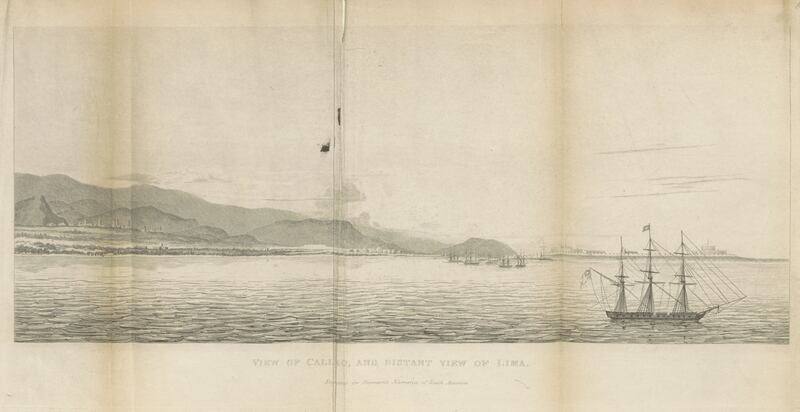William Bennet Stevenson was an explorer and adventurer who left his mark on South America and Greece in the early part of the 19th century. Few today know his name, but he is credited with being the first person to introduce the potato crop to a newly independent Greece. No mean feat given the Mediterranean climate.
Stevenson’s origins are obscure, but he is referred to as Irish in documents. He appeared in South America in about 1803 when he arrived in Chile with the intention of exploring the country. His plans came to an abrupt halt when he was arrested and jailed for eight months on account of hostilities between Spain and England.
Later he came to the attention of the colonial governor Count Ruiz de Castilla, president and captain-general of Quito, who made Stevenson his secretary. But rather than settle into a career of humdrum bureaucracy, he joined the rebels in Ecuador’s War of Independence in 1809, and a year later was appointed governor of the province of Esmeraldas, in north-western Ecuador.
When in 1818 Lord Cochrane, a famous British naval captain, became a Chilean citizen and vice-admiral of its navy, Stevenson joined him as his secretary and participated in many naval operations.
READ MORE

His 1825 book, A Historical and Descriptive Narrative of Twenty Years’ Residence in South America, captured the drama and heroism of the campaign to end Spain’s rule of the continent.
Cochrane later established the Brazilian Navy, which fought battles against the Portuguese, and he was subsequently recruited to the Greek navy in 1825. It may have been Cochrane who first brought Stevenson to Greece.
In Greece, Stevenson became an agriculture adviser to Ioannis Kapodistrias, the first governor of the newly independent Hellenic State.
Stevenson was appalled by the poverty and hunger suffered by the Greek population, many of whom had been uprooted during wars in the Ottoman Empire. In 1827, he petitioned the Greek governor to give him the opportunity to use his knowledge of agriculture to alleviate the suffering.
[ ‘Paddy the rebel’: The wily Irishwoman who parachuted into Nazi-held FranceOpens in new window ]
He was from the beginning a close collaborator of Kapodistrias, who displayed a special interest in farming, and his expertise was sought after by the latter for his agricultural policy.
Although a foreigner, Stevenson deserves to be honoured as one of the pioneers of Greece’s steadily emerging agriculture. It is possible to follow the challenges in 11 letters written in Italian that Stevenson sent to Kapodistrias and which are preserved in the archives. In the letters, Stevenson describes the conditions necessary for potatoes to grow, as well as wheat and maize.
He also advocated the planting of fruit trees. These would help the starving population as well as providing employment.
Stevenson ordered a large quantity of potatoes to be brought to Greece. They were sent by ship from Liverpool and his anxiety about the time it was taking for the cargo to arrive comes across in the correspondence with Kapodistrias.
Greek legend has it that the locals in Aegina initially spurned the potatoes as ugly and rejected them
There were also logistical challenges posed by the lack of equipment and the references to the need for crowbars suggests that the ground was rock hard. Eventually the captain of a passing Russian ship helped by presenting 30 crowbars for the workers in the fields.
Stevenson hoped that the harvest would be enough for 12,000 people for one year. Finding good soil in which to grow crops was difficult, but he discovered an area next to the Damala river, a marshy lowland, that would be most suitable for the cultivation of maize and which without a doubt would yield a rich harvest.
Stevenson clearly had a friendly relationship with the governor and the close interest taken by the latter in the agricultural developments of the nation shines throughout their correspondence. However, Stevenson’s health was deteriorating and in the later part of 1828, he left for London, probably suffering from malaria. It would be fascinating to know where in Ireland Stevenson came from, and what became of him after leaving Greece.
Greek legend has it that the locals in Aegina initially spurned the potatoes as ugly and rejected them. According to the story, Kapodistrias arranged for the tubers to be placed in a well-fortified building surrounded by armed guards. The locals, seeing this, thought the potatoes must be valuable which enticed them to break into the fortress to steal them, thus Stevenson’s efforts to rescue the population from starvation eventually triumphed.
This Extraordinary Emigrants article was written by Dr J Patrick Greene, Museum Director of Epic The Irish Emigration Museum in Dublin’s Docklands, an interactive museum that tells the story of how the Irish shaped and influenced the world












